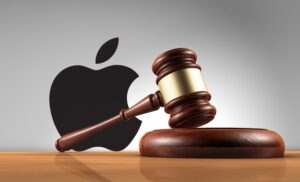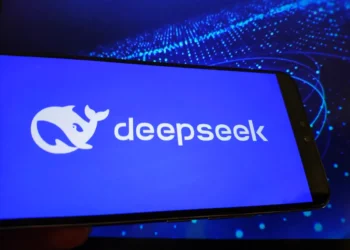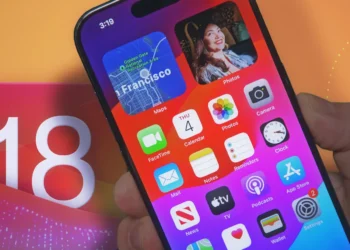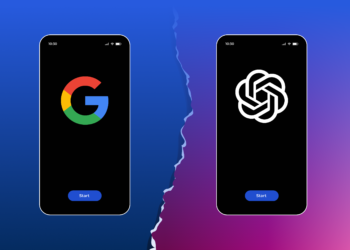
The intensity of antitrust investigations into Apple has sharply increased. On Thursday, the U.S. Department of Justice made public its lawsuit against the tech giant, alleging that it has monopolized the market by restricting iPhone users and stifling competition among hardware and software developers. This legal action follows a series of major antitrust challenges faced by Apple in jurisdictions beyond the United States, marking it as a significant and complex issue. We aim to provide a detailed analysis of the DOJ’s allegations, the reaction from the industry, and the broader consequences for both businesses and consumers.
As developments unfold in the Apple antitrust litigation, we will keep this page refreshed. However, it’s important to recognize that a swift resolution is unlikely. Legal experts predict that it could take anywhere from three to five years to reach a conclusion in this case.
The DOJ’s claims against Apple
The lawsuit outlines five key areas where Apple is accused of stifling competition:
“Super” Apps: These multi-functional applications align closely with Elon Musk’s vision for an “everything app” under the X brand. The DOJ alleges that Apple’s actions are aimed at thwarting such apps to make users more reliant on the iPhone.
Messaging Apps: The lawsuit points to the differentiation between blue and green message bubbles as a tactic to deter iPhone users from switching to competitor devices. This tactic is notably effective among certain groups, such as teenagers, among whom the iPhone purportedly has an 85% market share.
Cloud Streaming Gaming Apps: Apple’s purported resistance to cloud-based gaming services is highlighted, with the DOJ arguing that this strategy prevents consumers from accessing games without needing to invest in high-end hardware.
Digital Wallets: The DOJ takes issue with the nominal 0.15% fee Apple charges for transactions via Apple Pay, not because of the fee’s size but because of Apple Pay’s dominance in the mobile ecosystem. This, the DOJ claims, gives Apple undue control over near-field communication (NFC) payments, thereby limiting competition.
Smartwatch Cross-Platform Compatibility: The lawsuit also addresses the limited functionality of Apple Watches when paired with non-iPhone smartphones, asserting that this strategy increases the cost for users to switch to a different smartphone brand.
These accusations frame Apple’s practices as attempts to maintain and enhance its market dominance by curbing competitive efforts across several tech sectors.
Apple, and the wider industry’s, response
On Thursday, Apple released a comprehensive rebuttal to the Department of Justice’s (DOJ) allegations.
Apple’s main counterargument is that the DOJ is cherry-picking data to exaggerate Apple’s dominance in the smartphone sector. The company argues that the regulatory measures proposed by the DOJ, aimed at curbing what are claimed to be monopolistic practices, would erode Apple’s competitive edge in the marketplace and adversely affect iPhone users.
Apple expressed concern that the lawsuit undermines its essence and the unique principles that distinguish its products in highly competitive markets. “This lawsuit threatens who we are and the principles that set Apple products apart in fiercely competitive markets. If successful, it would hinder our ability to create the kind of technology people expect from Apple — where hardware, software, and services intersect,” Apple stated in their defense, as reported by TechCrunch.
However, the reaction from app developers has been less critical of the DOJ’s actions. The Coalition for App Fairness (CAF), which counts companies like Epic Games and Spotify among its members — both of which have previously engaged in public disputes with Apple regarding App Store policies — has expressed strong support for the DOJ’s regulatory efforts.
Rick VanMeter, CAF’s Executive Director, supported the DOJ’s initiative, stating on Thursday that the complaint “details Apple’s long history of illegal conduct — abusing their App Store guidelines and developer agreements to increase prices, extract exorbitant fees, degrade user experiences, and choke off competition.” He highlighted the global recognition of the harmful impacts of Apple’s practices and the efforts by regulators worldwide to address these issues.
What could this mean for iPhone users, and what’s next?
In the immediate term, not much. The release of the lawsuit, and the ensuing back-and-forth between Apple and the DOJ, was a flurry of activity that will take years to settle. The DOJ’s antitrust case against Google, which was filed back in 2020, went to trial last year and could still take a couple more years to reach a conclusion.
What you shouldn’t expect is for the present to play out like the past. Though the DOJ cites the successful antitrust prosecution against Microsoft in the 1990s, there are many distinctions between the two cases, mostly notably a gap between how easily defined Microsoft’s market dominance was compared to Apple’s current status quo.















































